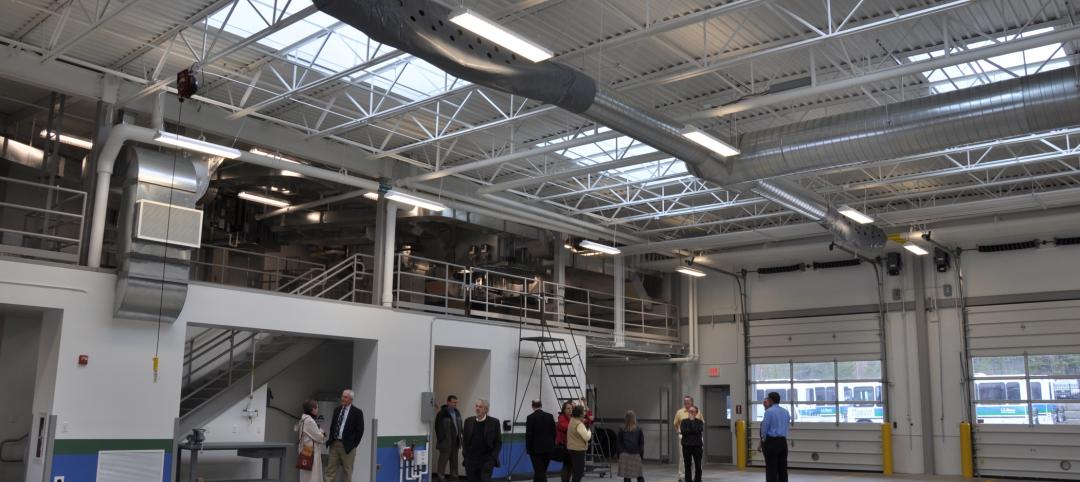The American Institute of Architects and MIT’s Center for Advanced Urbanism today announced the completion of their initial research report on eight cities and urban health, and laid out a path for translating this research into meaningful findings for policy makers and urban planners. You can see the full report here.
More than half of the world’s inhabitants live in urban areas, and this is projected to grow to 70 percent by 2050. Massive urbanization can negatively affect human and environmental health in unique ways, and many of those effects can be addressed through the realm of design. Some of the great health challenges over the next century, including the prevalence of obesity, asthma, cardiovascular disease, diabetes, and depression, among others, are both increasing at an alarming rate and frequently linked to socioeconomic factors, physical design and urban environmental factors.
“What this research represents is our first attempt to examine an array of urban health matters in eight major metropolitan areas in the United States, and to suggests a wide array of possible remedies, from better transportation planning to landscape retrofits,” said AIA Chief Executive Officer Robert Ivy, FAIA. “As we go forward, this collaboration will seek design recommendations that can be individualized to urban markets.”
“I would like in particular to congratulate the dozen or so students at MIT’s Center for Advanced Urbanism and in particular Alan Berger, professor of landscape architecture and urban design, and Andrew Scott, associate professor of architecture, for the incredible amount of effort and insight that went into compiling this report,” Ivy said.
“This research begins to unearth a truth that urban planners for many years have not realized, which is that there is no silver bullet for urban health,” says Adèle Naudé Santos, Dean of the School of Architecture + Planning at MIT. “Every city has different socioeconomic and physical layout issues. So the solution to make urban health better is going to [vary] in every city. One of the reasons we wrote the report was to give people a sense that the silver-bullet mentality, from technological or policy perspectives, needs to stop.”
“If we really want to look at urban health, we have to look across the entire metropolitan area that’s been urbanized in order to address the systems that make it perform,” said Berger. “You can’t look at a building without thinking about how people get to that building. The holistic way we look at cities here at MIT is that a city is a metropolitan area with all kinds of different fabrics, in terms of transit, economics, industry, the environment, and more.”
The report covers research that so far has been conducted in eight American cities - Atlanta, Houston, LA, San Francisco, Chicago, Minneapolis, Boston and New York. Teams of researchers have fanned out in each city to gather data about each city’s major design projects. The next step is to determine which city will serve as the ultimate laboratory for design solutions that can have a major impact on public health.
“Over the coming semester we will enter into discussions with city leaders, foundations, and local businesses to figure out where we can do the most good through collaboration on creating design solutions that improve urban health environments,” said Santos. “The research we have done so far sets the framework; what comes next is the real effort to come up with reliable design solutions to the health crisis facing America’s cities.”
About the American Institute of Architects
For over 150 years, members of the American Institute of Architects have worked with each other and their communities to create more valuable, healthy, secure, and sustainable buildings and cityscapes. Members adhere to a code of ethics and professional conduct to ensure the highest standards in professional practice. Embracing their responsibility to serve society, AIA members engage civic and government leaders and the public in helping find needed solutions to pressing issues facing our communities, institutions, nation and world. Visit www.aia.org.
About the MIT, Center for Advanced Urbanism
Established in 2012, the MIT Center for Advanced Urbanism’s objective is to become the world’s pre-eminent cultural center about the design of metropolitan environments, by articulating methods and projects to integrate separate disciplinary agendas in architecture, landscape, ecology, transportation engineering, politics and political philosophy, technology and real estate through a most eloquent design culture on scales ranging from the complex infrastructural intersection, to that of a neighborhood, on to the scale of an entire regional system.
Related Stories
| May 30, 2012
Hill International to manage construction of Al Risafa Stadium in Iraq
The three-year contract has an estimated value to Hill of approximately $3.3 million.
| May 29, 2012
Torrance Memorial Medical Center’s pediatric burn patients create their version of new Patient Tower using Legos
McCarthy workers joined the patients, donning construction gear and hard hats, to help with their building efforts.
| May 29, 2012
Reconstruction Awards Entry Information
Download a PDF of the Entry Information at the bottom of this page.
| May 29, 2012
AIA expands Documents-On-Demand service??
Six new documents added, DOD offers nearly 100 contract documents.
| May 29, 2012
Legrand achieves over 20% energy-intensity reduction in Presidential Challenge
West Hartford headquarters announced as Better Buildings, Better Plants “Showcase” site.
| May 29, 2012
Thornton Tomasetti/Fore Solutions provides consulting for Phase I of Acadia Gateway Center
Project receives LEED Gold certification.
| May 24, 2012
2012 Reconstruction Awards Entry Form
Download a PDF of the Entry Form at the bottom of this page.
| May 24, 2012
Gilbane’s Spring 2012 economic report identifies multiple positive economic and market factors
Anticipating increasing escalation in owner costs through 2014.
| May 24, 2012
Construction backlog declines 5.4% in the first quarter of 2012?
The nation’s nonresidential construction activity will remain soft during the summer months, with flat to declining nonresidential construction spending.















